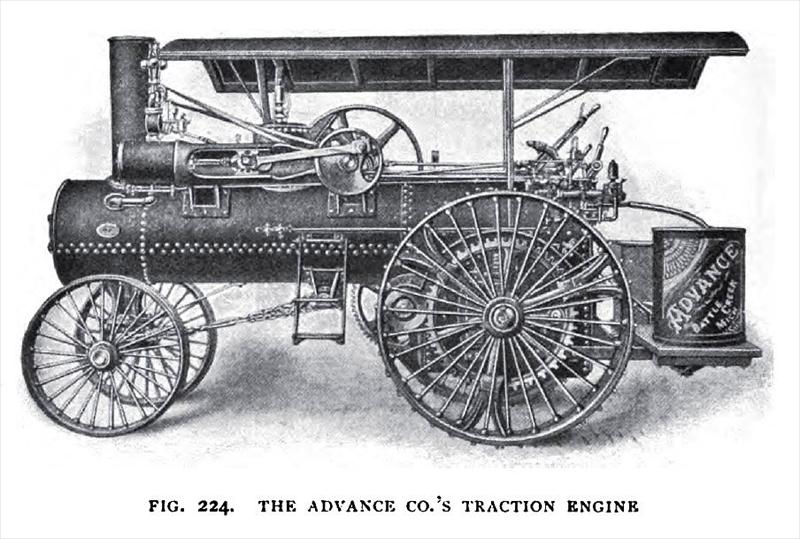
This company was organized March 1, 1881, and is now capitalized at
$1,500,000. The entire plant covers about 60 acres and has a total floor space of about 570,000 square feet. The capacity, working ten hours a day for eleven months in the year, is 1,000 engines, 1,800 separators,1,500 straw stackers, 2,000 feeders, 2,000 grain measures, loaders, etc.,600 corn huskers and 700 water tanks with a total value of about $4,000,000. The number of employees varies during: the year, but will average 575. Their wages for the year amount to $360,000 exclusive of office help and traveling salesmen.
The plant is operated throughout by electricity supplied by a modern
electrical equipment of 1,500 horse power. Scattered through the shops are 40 individual motors, 2,000 incandescent electric lights and 180 arc lamps. They have their own inter-communicating telephone system with 30 telephones, and in addition their private telegraph wires. Two watchmen are employed with 100 stations to visit and they record the time of each visit on a time clock. Alarms of fire may be turned in from 12 stations on their auxiliary fire system and the alarms are registered on a tape at the fire department so they know which building to visit.
Their shipping facilities are complete, three railroads passing directly
past the plant with 7,020 feet of side tracks in their yards, giving plenty of room for switching and making up train loads. Their product is marketed all over the world, but their chief exports go to South America. They have 19 distributing warehouses scattered over the grain districts of the United States and in addition numerous dealers and thousands of
local agents.
In 1902 this firm and Minneapolis Threshing Machine Co. joinly bought John Abell Engine & Machine Works and reorganized it into the American Abell Engine & Thresher Co., Ltd.
In 1911 the M. Rumely Co. bought Advance and then in 1912 Rumely took over American Abell Engine & Thresher Co., Ltd. Rumely when into receivership in 1915, but production at the Advance plant lasted until 1917.
Information Sources
-
Steam Power on the American Farm by Reynold M. Wik, 1953 page 251
- Encyclopedia of American Steam Traction Engines by Jack Norbeck, 1975 pages 54-55
- Michigan Bureau of Labor & Industrial Statistics, Volume 22, 1904 page 367
- The Steam Tractor Encyclopedia by John F. Spalding & Robert T. Rhode, 2011 pages 60-65